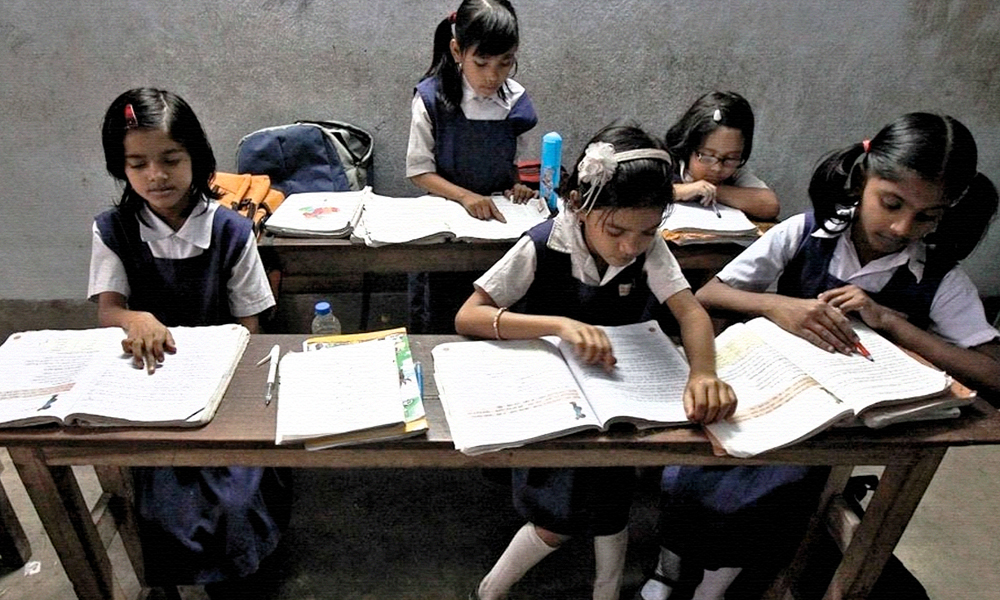
"Women Should Be Represented As Equals": UNESCO Urges Govts To Impart Gender-Sensitive Education
Writer: Navya Singh
Navya writes and speaks about matters that often do not come out or doesn’t see daylight. Defense and economy of the country is of special interest to her and a lot of her content revolves around that.
India, 30 Jun 2020 1:14 PM GMT | Updated 1 July 2020 5:17 AM GMT
Editor : Shubhendu Deshmukh |
Shubhendu, the quint essential news junky, the man who loves science and politics in equal measure and offers the complete contrast to it by being a fan of urdu poetry as well.
Creatives : Abhishek M
" An engineer by profession, Abhishek is the creative producer of the team, graphic designing is his passion and travelling his get away. In more ways than one, he makes the content visually appealing."
The report mentions revision by the Maharashtra State Bureau of Textbook Production and Curriculum Research in 2019 where men and women share household chores.
In a major setback to the education system across the world, UNESCO's recent Global Education Monitoring Report has showed that women and girls are under-represented in school textbooks and are mostly depicted in traditional roles in many countries.
The report has urged governments to revamp the education systems to make them more inclusive, diverse and accessible to all. It also points out that not only the number of images of female characters included in the textbooks is very less in comparison to those of males, women are also represented in "less prestigious" occupations and as introverts and passive.
While portraying men as doctors and women as nurses, only showing women in subjects related to food, fashion or entertainment, showing women in voluntary roles and men in paid jobs, are among some of the major gender stereotypes pointed out in the report.
The Global Education Monitoring Report (GEM Report) is developed by an autonomous team and published by UNESCO. The report gives an in-depth analysis of key factors for the exclusion of learners in education systems worldwide, including background, identity and ability, gender, age, location, poverty, disability, ethnicity, indigeneity, language, religion, migration or displacement status, sexual orientation or gender identity expression, incarceration, beliefs and attitudes.
The report also takes note of attempts by some countries to revise the textbook images to reflect a better gender balance. The report mentions revision by the Maharashtra State Bureau of Textbook Production and Curriculum Research in 2019.
"For instance, grade 2 textbooks show men and women sharing household chores, along with a female doctor and a male chef. Students are asked to note these images and talk about them," the report said.
"In Afghanistan, women were almost absent from grade 1 textbooks published in the 1990s. Since 2001, they have been more present but in passive and domestic roles as mothers, caregivers, daughters and sisters. They are mostly represented as a dependent, with teaching being the only career open to them," the report said.
"Chilean grade 4 history textbooks had 2 female characters for every 10 male, and their historical contributions were represented with stereotyped views linked to domestic chores. The grade 6 science textbook had 2 female vs 29 male characters," it added.
Women's under-representation in textbooks was also observed in Italy, despite its participation in a European Union project in which textbook publishers agreed to improve gender equality in 2017.
"In Turkey, primary school textbooks presented unequal social roles and a patriarchal understanding of family unquestioningly, and secondary school textbook language exhibited sexism," it stated.
Also Read: NASA Names Washington Headquarters After Its First Black Female Engineer Mary Jackson
 All section
All section














